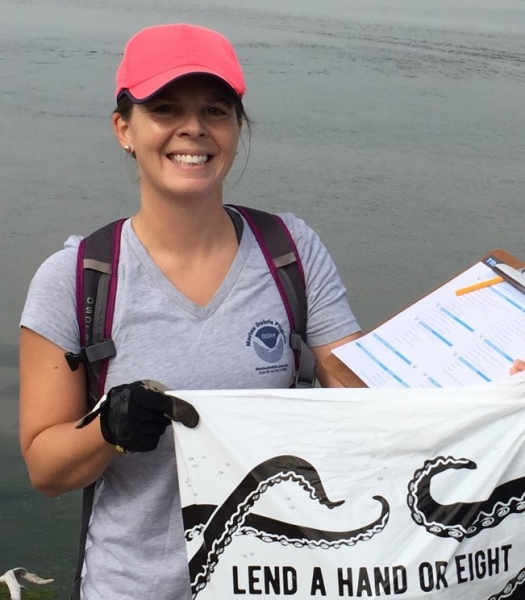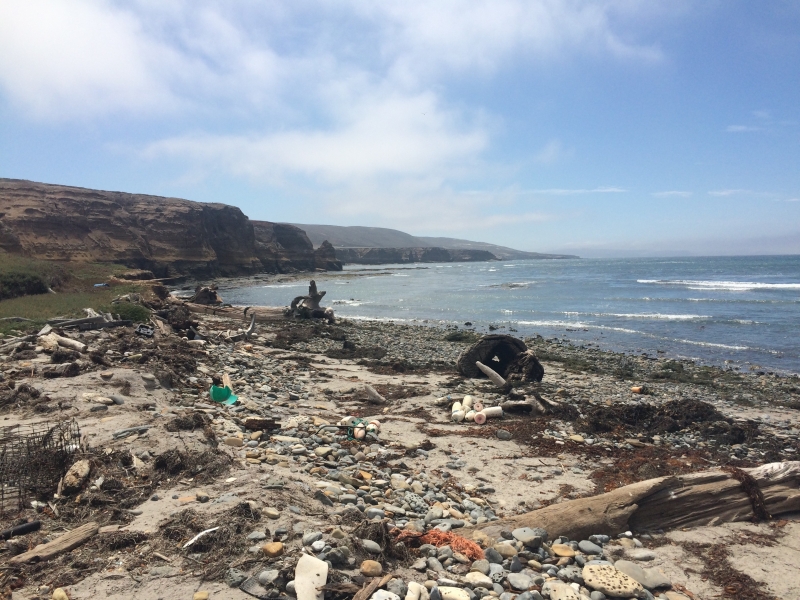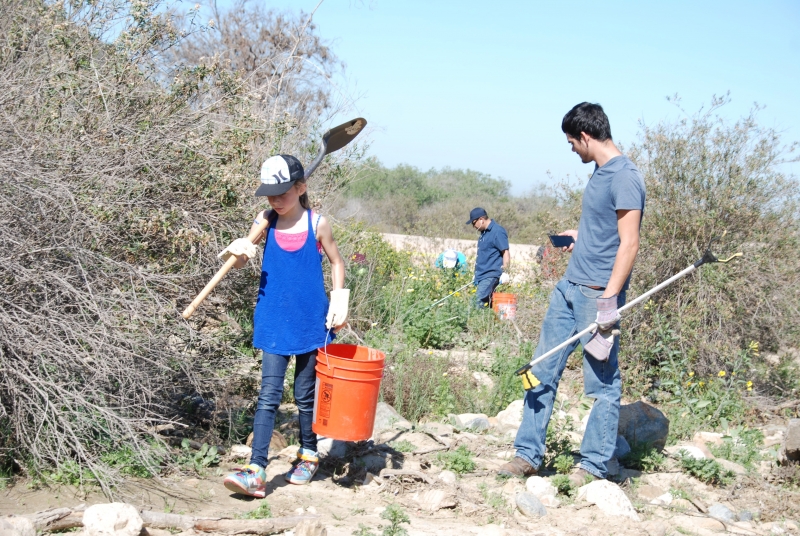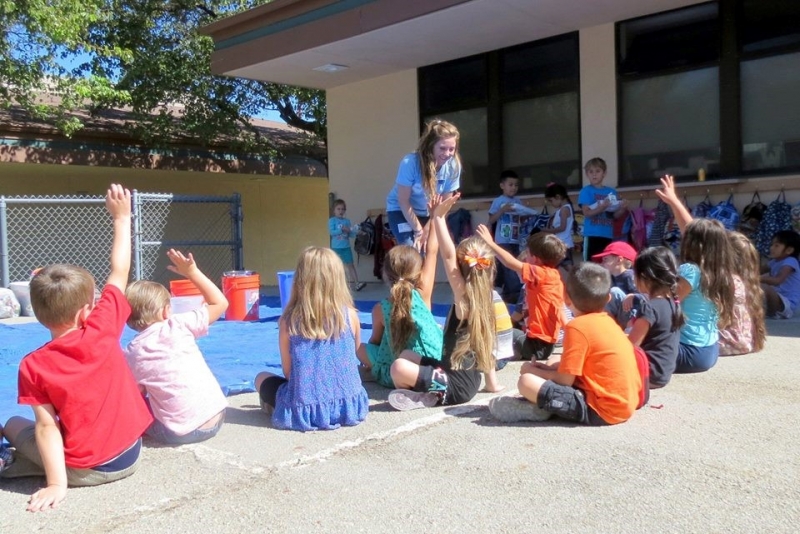 Meet Sherry Lippiatt, the NOAA Marine Debris Program’s (MDP’s) California Regional Coordinator! After earning her B.S. in Environmental Science from Rensselaer Polytechnic Institute in Troy, New York, Sherry moved west to complete a Ph.D. in Ocean Sciences at the University of California Santa Cruz. In 2010, Sherry joined the MDP as a Knauss Sea Grant Fellow and in 2012, she moved into her current position in Oakland, California, as the California Regional Coordinator. In this role, Sherry has helped to coordinate the response to debris generated by the 2011 earthquake and tsunami in Japan, provided technical support to California stakeholders working to address marine debris, led the MDP’s Marine Debris Monitoring and Assessment Project (MDMAP) and the development of the MDMAP Toolbox, and collaborated with many wonderful partners in the region. In 2016 Sherry was honored as a NOAA National Ocean Service team member of the year! Reach out to Sherry at Sherry.Lippiatt@noaa.gov!
Meet Sherry Lippiatt, the NOAA Marine Debris Program’s (MDP’s) California Regional Coordinator! After earning her B.S. in Environmental Science from Rensselaer Polytechnic Institute in Troy, New York, Sherry moved west to complete a Ph.D. in Ocean Sciences at the University of California Santa Cruz. In 2010, Sherry joined the MDP as a Knauss Sea Grant Fellow and in 2012, she moved into her current position in Oakland, California, as the California Regional Coordinator. In this role, Sherry has helped to coordinate the response to debris generated by the 2011 earthquake and tsunami in Japan, provided technical support to California stakeholders working to address marine debris, led the MDP’s Marine Debris Monitoring and Assessment Project (MDMAP) and the development of the MDMAP Toolbox, and collaborated with many wonderful partners in the region. In 2016 Sherry was honored as a NOAA National Ocean Service team member of the year! Reach out to Sherry at Sherry.Lippiatt@noaa.gov!
California is a state of mind, sun, good times, and unfortunately, marine debris. California’s beautiful coastline is often cluttered with trash and other items that don’t belong there. Luckily, there are several efforts currently underway to address marine debris in this beautiful region of the country. Check out some newly-established projects in the NOAA Marine Debris Program’s California region:
Focusing on the unique Channel Islands, California State University Channel Islands is working to monitor and remove debris from Santa Rosa and Santa Cruz Islands. CSUCI staff and students from the Santa Rosa Island Research Station and the National Park Service are using MDMAP protocols to measure the types and abundances of debris, and are collecting microdebris samples and assessing the ecological benefits of removal. Comparing this data to that from surveys from the 1990s, this information will teach us how debris types and amounts have changes over the years. This project is also engaging students through outreach to support the cultivation of a community of Santa Barbara Channel stewards committed to preventing marine debris at the source. For more on this project, check out the project profile!

Moving south and to the mainland, a project led by the Southwest Wetlands interpretive Association is working to address the debris that accumulates in the Tijuana River National Estuarine Research Reserve. Large amounts of debris enter the watershed and settle in this region, and so this project manages debris through existing trash capture infrastructure (initiated during a previous project) and community-based cleanup efforts in the area. The project is also focusing on reducing the amount of debris that enters the region through education and outreach to both U.S. and Mexican groups. For more information on this project, check out the project profile!

Although removing debris from the environment is important, the ultimate solution to the marine debris problem is prevention. One Cool Earth (OCE) is working to prevent marine debris from entering the Salinas River watershed through outreach to local schools in Paso Robles and Atascadero, California. Students and their teachers learn about marine debris and how our everyday waste can impact the environment. OCE then works with the schools to implement waste reduction programs and provide students with the tools to make a measureable difference in the amount of debris that may make its way to the ocean. For more on this project, check out the project profile and this video!

There are lots of cool things happening in California! Keep your eye on our blog this week for more, and check out our website for more interesting marine debris projects in California and throughout the country!
